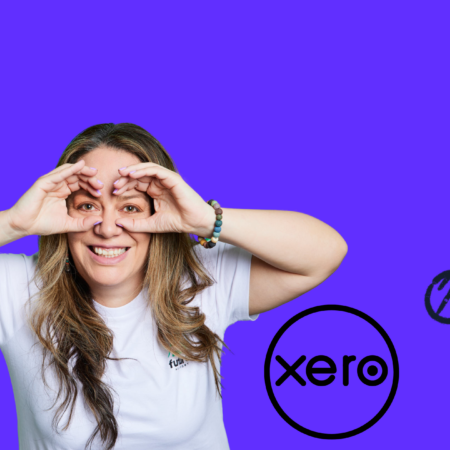What happens when a business gets into significant debt?
Bad business debt is not a term business owners love to hear but it’s often a familiar one. Sometimes it’s necessary to start a business with debt in tow – a bank loan that allows you to get things off the ground. In Australia there are thousands of businesses that are currently in debt, some of which can make ends meet and others who won’t be so fortunate. The ATO currently has an estimated $66 billion of uncollected tax payments which gives you a good idea of how common it is for a business to find themselves in debt. So, what happens when this occurs and how can you avoid it from happening to your business?
Key Highlights
- Causes of Business Debt: Businesses often fall into debt due to poor cash flow, extended credit terms, unexpected costs, and inefficiencies. Key warning signs include overdue tax, high-interest loans, and rising stress.
- Getting Out of Debt: Tackle debt by negotiating with creditors, consolidating or refinancing loans, and cutting costs. A good accountant can guide recovery.
- Staying Debt-Free: Avoid debt by monitoring cash flow, maintaining reserves, enforcing payment terms, and keeping fixed costs low. Plan ahead for slow periods and know your break-even point.
The most common ways businesses get into debt
Poor cash flow management
Number one is always poor cash flow management. Keeping track of income and expenses, timing or payments, setting a budget… the list goes on. These are all common mistakes that we see with business clients. Often it’s just about education and becoming well versed on what responsible cash flow management looks like. This is one of the biggest reasons to have an excellent accountant – someone to ask before spending big on another piece of equipment, or to pick up on poor cash flow management before it becomes a hole that’s too deep to dig out of.
Over-extending credit terms
More specifically, over-extending credit terms are a huge cause of cash flow issues. When too much credit is extended to customers (for instance, continued supply of coffee beans to a cafe who’s already overdue on the last two months of payments), it means that big amounts of cash owed are built up and not paid. This has a ripple effect on the entire business – it means they can’t then pay their own suppliers, and the cycle continues.
Unexpected expenses
Unexpected expenses like recruitment costs, losing team members, accidents, natural disasters like the terrible flooding we saw last year and equipment breakdowns can catch businesses out when they simply don’t have the cash reserves to solve the problem.
Inefficient operations
Inefficient operations is next on our list which includes things like not pricing correctly, costs outweighing income and failure to raise prices when cost of goods have increased. The list goes on. This is where business advisory comes into the mix – a VCFO should be able to identify the inefficiencies before they cost you your business.
Finally we have the competition. Intensely competitive industries with low margins put pressure on businesses to lower prices to win work. For instance volume home builders who operate on small margins – we saw many of these businesses struggle last year with lock in contracts not reflecting the price of labour or materials that have now skyrocketed.
The tell tale signs that business debt is out of hand
The most obvious signs of debt creeping up are falling behind on payments to the ATO for GST, PAYG and Income Tax. The next one is overdue superannuation payments or falling behind on them altogether.. This leads to more debt with fines and admin fees incurred. It’s a vicious cycle. These late payments often indicate more significant financial problems that can compound if they aren’t addressed.
Taking out high-interest loans or maxing out credit cards are both usually short-term buffers that signal cashflow problems – and neither of these options is a long-term fix. Suppose you find yourself relying on short-term loans repeatedly. In that case, it’s a clear warning sign that your business’s financial health is deteriorating, and you need to revisit your overall financial strategy.
Another key thing to be aware of is the stress levels of the business owner and their mental and physical health. As debt increases, these are often the side effects that need the most immediate attention. Debt can create a great deal of personal stress and anxiety, which can negatively affect decision-making, productivity, and relationships. Keeping a balanced life and seeking support when needed is vital during difficult financial times.
What Can Happen When a Business Gets Into Significant Debt…
- The Business Fails
Around 60% of small businesses in Australia fail in the first three years and debt is a huge contributor to this state. In fact, the number one reason businesses fail is poor cash flow management. Without sufficient cash flow, a business can’t pay for essential operations, leading to a rapid decline in the overall business health. When debt overwhelms, many businesses face the hard reality of shutting down.
- Business Restructuring
The new SBR regime was structured to help more small business owners survive a rough patch. This initiative provides businesses with the option to restructure their operations and clear debts, allowing them to continue trading under new terms. While this option can help businesses get back on track, it’s not a guaranteed fix, and requires careful planning and expert advice to execute successfully.
- Liquidation, Voluntary Administration or Bankruptcy
If restructuring doesn’t work, liquidation may become the last resort. In this scenario, a business’s assets are sold to repay debts, and operations cease. Voluntary administration, however, offers a temporary reprieve where an external administrator takes over and tries to negotiate with creditors for a viable solution. Bankruptcy, while offering protection from creditors, can have long-lasting effects on the owner’s personal finances and future business opportunities.

How Can a Business Get Themselves Out of Debt?
Negotiate with Creditors
Your first port of call is to negotiate with creditors, asking to restructure payments and get a manageable plan happening. Most creditors would prefer to receive some payment rather than none, so they may be open to negotiating better terms, especially if they believe you can get back on your feet. Be open and transparent about your financial situation, and offer a realistic repayment plan.
Debt Consolidation
Debt consolidation is key. Often with multiple credit cards or high-interest loans, there may be an opportunity to consolidate. This can simplify your repayments and lower the overall cost of the debt, giving you a better chance to regain control of your financial situation.
Refinancing
Refinancing is another good option, particularly if your main creditor is the bank. Speaking to a good broker is paramount. Refinancing allows you to restructure existing loans to get better terms, which can reduce monthly repayments and make the debt more manageable. A broker can help you identify the best options available based on your current financial standing.
Cost-Cutting Measures
Work with your accountant or advisor to understand where costs could be cut and how much cutting can be done. Even small savings in non-essential areas can add up over time and help improve your cash flow. Additionally, cutting inefficiencies in your business operations or renegotiating supplier contracts can free up cash for more urgent debt repayments.
Additionally, cutting inefficiencies in your business operations or renegotiating supplier contracts can free up cash for more urgent debt repayments. Another effective cost-saving strategy could be implementing carbon accounting, which helps businesses reduce environmental impact and potentially lower operational costs.
How to avoid business debt
1. Monitor Cash Flow
One of the most important ways to avoid falling into debt is to regularly monitor your cash flow. Keeping an eye on how much money is coming in and going out of your business will help you stay ahead of potential issues before they become big problems. This also means ensuring that your business is consistently earning enough to cover its expenses and leaving room for savings or unexpected costs.
2. Maintain a Healthy Bank Balance
It’s crucial to maintain a healthy bank balance. Having sufficient funds in your account means that you can cover any unforeseen expenses that might arise without resorting to high-interest loans or credit cards. A buffer also ensures that you can continue operations without disruption during lean periods.
3. Strong Invoice Terms and Payment Processes
Having clear and strong invoice terms, including payment deadlines and penalties for overdue accounts, will help ensure you get paid on time. It’s essential to follow up with customers who miss payments and to keep track of overdue invoices. Strong payment processes will keep your cash flow healthy and reduce the likelihood of credit issues.
4. Manage Debt Effectively
Don’t rely on the money that should be going to the ATO or other creditors. It’s tempting to divert cash from your tax obligations to cover immediate expenses, but this will only lead to trouble in the long term. Managing debt effectively means staying on top of your liabilities and making sure you’re paying them on time to avoid fines, penalties, and additional debt.
5. Diverse Revenue Streams
Having diverse revenue streams is essential for minimizing the risk of debt. If your business relies too heavily on one source of income, any disruption to that income can cause significant cash flow issues. Expanding your services or products or exploring new market segments can help reduce the financial strain on your business.
6. Minimal Fixed Costs
Understand the difference between fixed and variable costs. Fixed costs, like rent and insurance, don’t change regardless of how much revenue your business brings in, so minimising these wherever possible is important. Having minimal fixed costs allows you to be more flexible in adjusting your business strategy when revenue fluctuates.
7. Know Your Break-even Numbers
Knowing your break-even point is crucial for avoiding debt. This is the level of sales you need to cover your costs, with no profit or loss. Once you know your break-even point, you can focus on generating enough sales to cover your expenses, ensuring that you stay financially stable.
8. Plan Ahead for Slower Periods
Many businesses experience seasonal downturns or slow periods. Planning ahead for these times ensures that you’re not caught off guard and are able to manage cash flow effectively throughout the year. Building up reserves during busier months can give you a financial cushion to carry you through the slower times.
A good advisor and or accountant will mean, in most instances, that problems are solved before the debt gets completely out of hand.
If you need to chat cashflow, budgets or debt get in touch.














